I ran a similar series of bookcase pictures as the ones I posted earlier today, only with 3 stops higher ISO settings.
I put a Zeiss 35 mm f/2 Biogon ZM on the Sony a7S, using a Novoflex adapter. I put the camera on a big RRS carbon fiber tripod. I set the ISO to 25K, the aperture to f/8, focused with live view, and set the shutter speed for an ETTR exposure. I took a picture:

Then I changed the ISO to 12K. I did not change the f-stop or the shutter speed. I took another picture. I continued that pattern all the way to ISO 800.
I developed the images in Lightroom 5.5 with default settings except for all noise reduction off. Then I set the Exposure control on the ISO 800image to an extra +5, the Exposure control on the ISO 1600 image to an extra +4, the Exposure control on the ISO 3200 image to an extra +3, the Exposure control on the ISO 6400 image to an extra +2, the Exposure control on the ISO 12K image to an extra +1, and didn’t adjust the Exposure of the ISO 25K image. I white balanced the ISO 25K picture and set all the others to that WB.
Here are the overall pictures, less the ISO 25K one above:
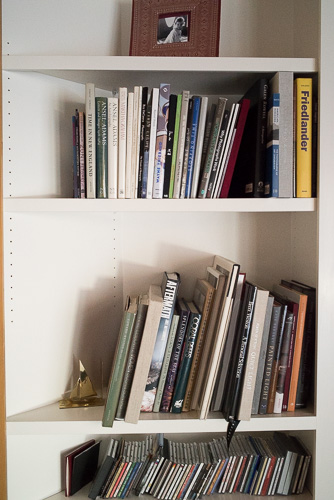
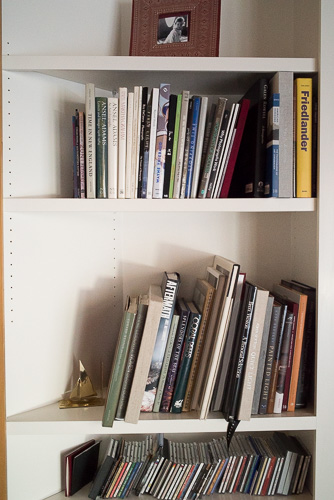
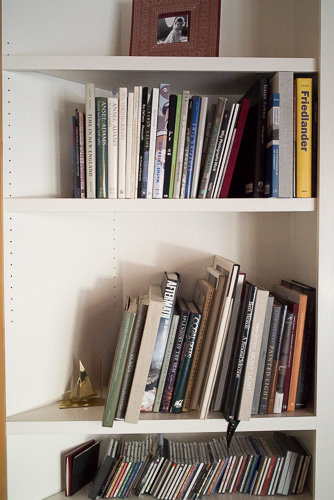
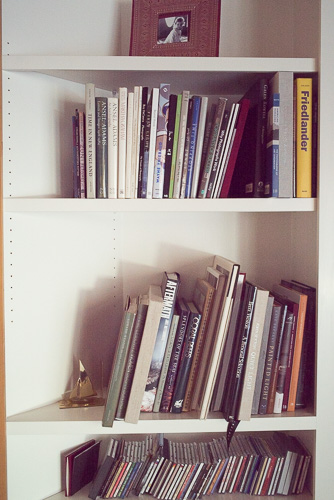
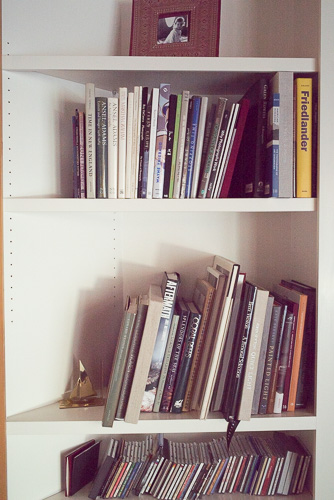
Here are the crops:

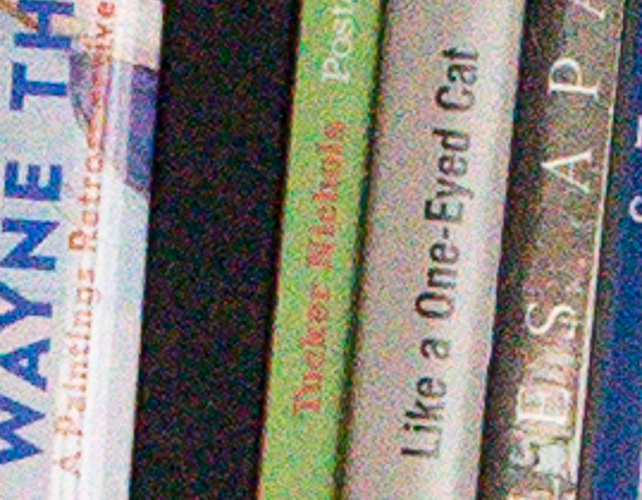
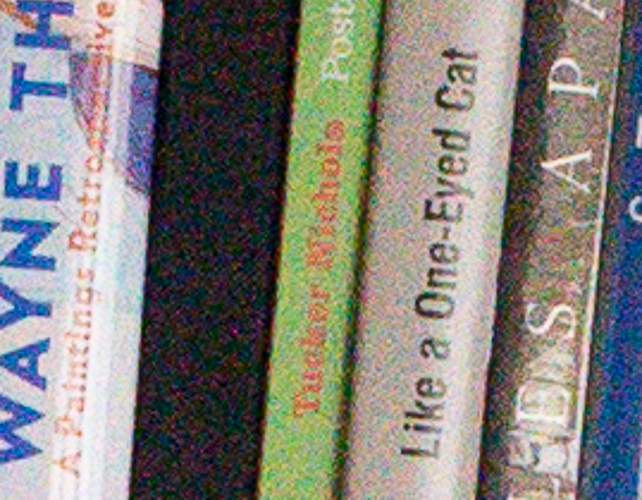
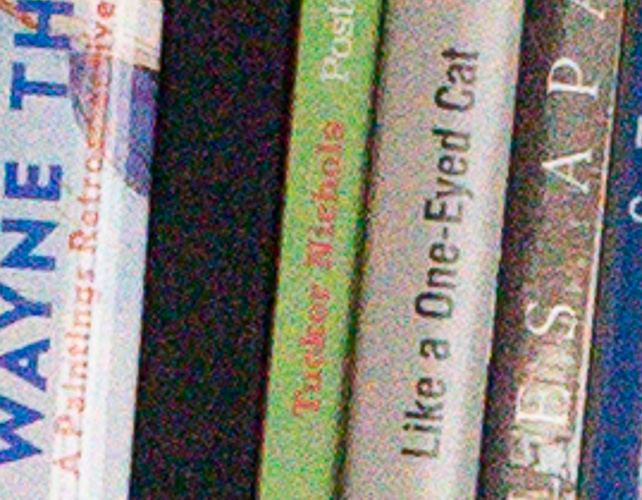

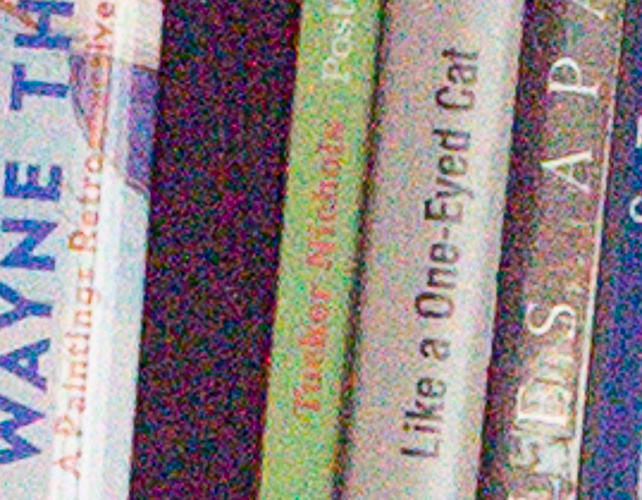
The binding of the black book is noisier and brighter at ISO 1600 and ISO 800 than in the other images. I think this is because of lower sensor-refered read noise at ISO 2000 and above. I attribute this to the conversion gain change that I think is happening as the ISO is changed from 1600 to 2000.
If, as I suspect, Sony is using the Aptina switched capacitor conversion efficiency change technique, it’s working well for them.
Nasri Lian says
Thanks for this second test! Both tests were shot in RAW i presume?
Interesting how the quality changes when ISO in camera is set to at least over ISO 2000.
However, from these pushing the exposure up tests sparked a curiosity. Say to compare two pictures shot with the same aperture and shutter:
1. ETTR, shot in ISO 800.
2. Same aperture and shutter but the ISO raised to 3200 (which may introduce overexposing the image).
Lightroom – Take Picture No.2, bring the exposure down to match the level in picture No.1. I wonder what would the result be.
Traditionally, I’m sure those clipped out highlights can be brought back from ISO 3200 as long as it was captured in RAW.
Jim says
Yes, all images were exposed and processed in raw. This wouldn’t work in JPEG.
About Lr’s highlight recovery. Lr can recover some data if one or two raw channels are clipped, when measured with a raw histogram analyzer like RawDigger. It guesses at what the clipped channel(s) would have looked like by looking at the unclipped one(s). It can’t do anything if all channels are clipped.
Most people don’t look at real raw histograms, but the JPEG ones on the back of the camera or the PPRGB with sRGB tone curve on in Lr. Both of those usually show clipping even if the raw channels are actually fine.
So, the answer to your question depends on what you mean by ETTR. If you mean real raw ETTR, what you propose won’t work. If you mean uncalibrated in-camera JPEG ETTR, it might.
Take a look at this: http://blog.kasson.com/?page_id=2387
Jim